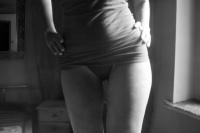Sew fancy clothes yourself
In order to sew unusual clothes yourself, you don't have to complete an apprenticeship as a tailor. A few basic knowledge of sewing is enough to get to work and become a hobby designer.

What you need:
- sewing machine
- Accessories for the machine (needles)
- Tailor scissors
- Paper scissors
- Pins
- Hand sewing needles
- Sewing thread
- Basting thread
- Tape measure
- ruler
- Tailor's chalk
- Pen
- Copy wheel
- Copy paper
- material
- Accessories such as buttons
- Dress cut
Shopping for sewing fancy clothes
- Patterns for unusual dresses can either be bought individually in shops or online shops for sewing supplies, or you can find them in a sewing magazine. Almost all cuts are available in several sizes, whereby you often have to extend and expand the larger sizes yourself on the cut paper.
- The choice of fabric: Most of the cuts come with the appropriate fabric quality, i.e. whether the fabric should be stretchy and flowing or whether it should be a solid coat fabric. Not every pattern can be made from every fabric. To practice it is better to sew your desired pattern with a 'sample fabric' and only then the correct model. The quantities are usually included with the cut.
- You should buy the color matching sewing thread and buttons or possibly zips to go with the fabric. In addition, you often need Vlieseline, which is in collars or Bags ironed on for reinforcement. Note: As a beginner, only use single-colored fabrics without a pattern, otherwise the pieces will not necessarily fit together.
The cut for unusual fashion
- The cut sheet is spread out on a large table. If you work with a fashion notebook for unusual dresses, all cuts are recorded on a cut sheet. This is clearer for individual cuts, so there are good instructions and lots of tips in the booklet. In the instructions you will find the numbers under which the cut can be found on the cutting sheet.
- Now use a pen to trace the individual pattern parts for your unusual piece. Then pause the cut either on tissue paper or thread it through with the copying wheel on wrapping paper or something similar. Sometimes you have to lengthen the cuts yourself or put them together from two parts. All lines and markings for buttonholes and darts etc. must be transferred exactly.
You want a dress that goes with the most beautiful graduation dresses of the evening ...
Cutting the fabrics for your clothes
It quickly happens that you cut individual parts of the fabric incorrectly and then you can no longer sew the whole well-planned, fancy piece of clothing because the fabric is not enough. Important to know: All pattern parts are only intended for one half of the body, so you cut the fabric twice and have all the necessary parts. The front of the fabric is on the inside! The selvedges of the fabric must be pinned exactly on top of one another with pins.
- You now place all the pattern pieces, including the small parts such as pockets and trimmings, on the entire fabric. You have to include the hem around the pattern pieces, so never cut along the pattern! At the end of the skirt or trousers, one calculates 5-7 cm; for arm balls, neck and armholes 1 cm and for all other seams 2-3 cm. When placing the parts on the thread run arrows (long vertical lines through the middle of the cut) must run parallel to the selvedge.
- Pin all the pieces in place with pins and draw the seam allowances around them with chalk, then you can cut out the pieces. Then you have to transfer all the markings onto the fabric with the help of a copy paper and the copy wheel.
- In order to transfer the markings to the other side as well, you have to remove the paper, turn the tightly pinned fabric over and follow the markings again with the small wheel.
- Your unusual piece of clothing will now be sewn together on a trial basis. To do this, sew the parts together - after pinning them together with pins - with a coarse basting thread by hand in generous stitches. You can see how the parts belong together by the numbers on the pattern and in the sewing instructions. In this phase, a lot can be tried and done wrong.
- Once you have sewn everything together, you can carefully try on the unusual piece and see whether the sleeves are too short or too long and where it does not fit well. In principle, it must not be too tight, but must allow room for movement. All of that can still be corrected now. If you are satisfied with the fitting, the sewing machine can finally be used.
Sewing fancy clothes
You should be familiar with the sewing machine before sewing a whole piece of clothing.
- You now sew all the pieces together in the manner prescribed by the fabric and cut. Some fabrics, such as jersey, require the zigzag stitch, but most of them require the normal machine stitching. Before you 'overcast' the seams, try the garment on again and see whether it fits really well, because you can open all the seams again if necessary.
- Then overcast the edges of the fabric protruding from the inside, i.e. sew around them with a zigzag stitch so that they do not fray. The exact processing of pockets, buttonholes, collars and cutouts cannot be explained in more detail here. For this you need a step-by-step guide with the help of photos.
- At the end, iron out all the seams and darts from the left and right.
How helpful do you find this article?


